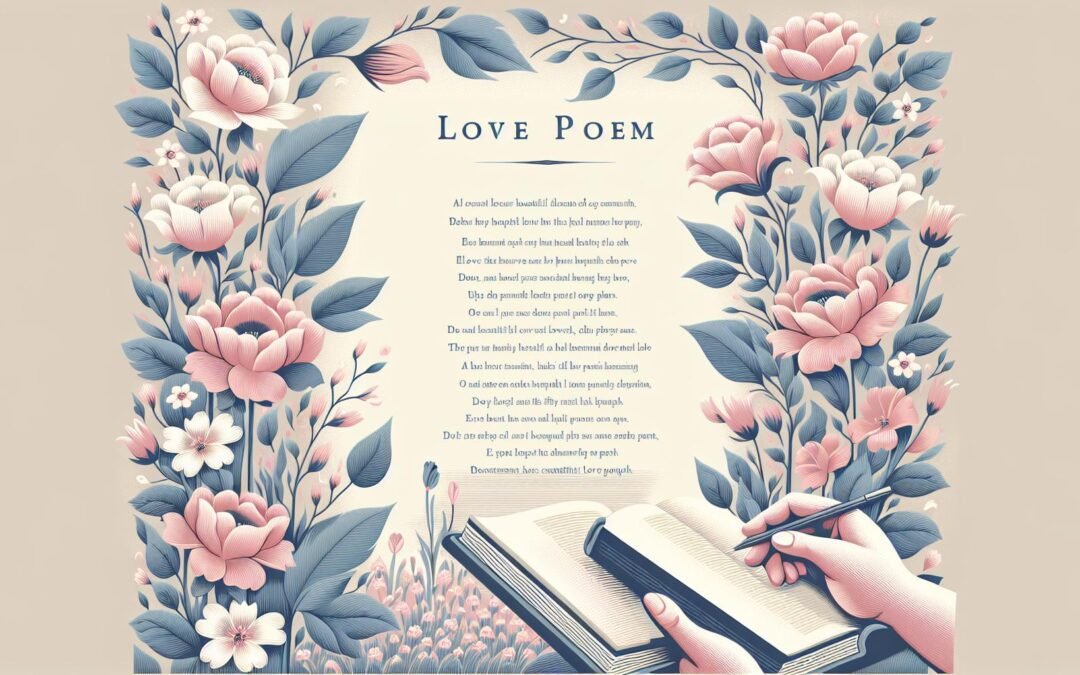Beautiful love poems mutate through millennia, taking the shape of their worlds. When Sumerian verses sang to the goddess Inanna, desire took the guise of fertility and cosmic ritual. In Greek lyric, the voice of Sappho emerges in fragments: sharp, compressed, stoking intimacy across centuries. The Sanskrit Gāthās and the layered poetry of Kālidāsa refine longing through dense imagery, coaxing nature’s minute details into metaphors for absence and reunion. Early Chinese poets, including Qu Yuan and Li Bai, bind landscapes to the heart, invoking petals, rivers, or distant moons to hold yearning and memory. Visit an extensive collection of translated love verse for further exploration.
Beautiful Love Poems: Lineages and Transformations
Medieval Ritual and the Invention of Courtly Love
The traditions of Occitan and Provençal courts did not merely invent etiquette in romance; troubadours codified longing as both spiritual ordeal and cultivated art. Their verses circulated through halls and châteaux, raising desire toward the level of vocation. Courtly rituals shaped the later sonnet, weaving codes of restraint and distance into the form’s very sinews. The beloved does not merely inspire; she governs the poet’s trajectory, functioning as a gravitational force, unmoving and essential.
The Italian sonneteers, Petrarch first among them, crystalized the conventions. His language entwines contradiction—cold fire, painful solace, frozen heat. English heirs such as Wyatt, Surrey, and Shakespeare recast this legacy, fitting taut passions into iambic frameworks. The sonnet reflects the internal conflict of self and aspiration, corporeal longing pacing beneath spiritual ideals. Shakespeare’s hundred-and-fifty-four sonnets grant the English language its definitive mode for addressing the paradoxes of passion. Browse critical lists of poetry collections to encounter further innovations.
The Romantic Upheaval and New Poetic Individualism
During the Romantic era, poets untangled themselves from the obligations of inherited forms. Wordsworth, Byron, Shelley, and Keats constitute a lineage evolving toward the primacy of lived experience. They relocate the drama from feudal hallways to the solitary self, turning private sensation into an artistic revolution. Instead of codes and restraint, the poetry radiates urgency and authenticity—emotion occupies the center. German and Russian voices, including Hölderlin and Pushkin, interlace personal longing with elements of the sublime and tragic, allowing ambition and despair to merge.
These transformations release the beloved from her pedestal, integrating her with nature’s rhythms or the wild surge of imagination. The personal and the universal intersect: love becomes both an upheaval and an initiation, a force rewriting subjectivity and, at times, society itself. For a chronological archive of influential figures, see the best modern poets.
Modern Experiments and Unbound Voices
Twentieth-century poets disassemble the assumptions of previous eras. Modernist language deploys fragmentation, concision, and wit against the old patterns. T. S. Eliot exposes emotional desiccation, e.e. cummings toys with orthography, Anna Akhmatova supplies urgency amidst repression. Contemporary poets, among them Anne Carson and Ocean Vuong, challenge boundaries, weaving together queer desire, memory’s unpredictabilities, and the play of multilingual diction. This genre extension brings previously marginalized experiences into the conversation, multiplying possible forms.
Transformation persists in every generation. Explore this collection of contemporary romantic poetry to trace the echoes of tradition amid relentless invention.
Aesthetics of Beauty in Love Poems
Philosophical Foundations and Changing Concepts
Plato and Aristotle appraise beauty as an intricate fusion of form and content, always seeking balance between virtue and pleasure. Kant and Simone Weil shift focus toward encounters with the unknown, seeing aesthetic experience as a bridge to transcendence. In the hands of the Romantics, beauty condenses in vivid moments—a glance, an outburst, the raw grain of intensity. For later generations, beauty is less a static ideal than an event: it strikes in moments where phrasing overturns expectation or intimacy feels strange and immediate at once. Find more theoretical essays at Poetry Foundation.
Form, Image, and Sound: The Mechanics of Seduction
A beautiful love poem uses architecture to lure and hold. The sonnet tightens desire into a circle; free verse unspools, granting breath. The volta, placed with surgical intent, pivots the poem’s logic. Imagery heightens perception so that gesture or glance reverberates beyond itself. Sound, through rhyme, alliteration, assonance, and subtle modulation, invites sensual pleasure during the act of reading. Each poem’s form becomes a vessel for emotional charge. Discover interpretations and new voices at Poets.org.
Tensions of Sincerity and Artifice
The tension animating the most lasting work comes from a balance between personal disclosure and constructed illusion. Sincerity concentrates feeling, bringing immediacy. At the same time, stylization or rhetorical excess heightens both intellectual and sensual pleasure. Petrarch’s elegies or Rimbaud’s disruptions prove that theatricality and vulnerability only exist through their interplay. Artifice clarifies what straightforward confession might blur.
Universality Meeting the Unique
Love poetry addresses both individual and collective registers. The scent of a wrist, the timbre of a single voice, stands beside mythic patterns. Beauty arrives in these convergences, transforming the private into something recognizable by strangers.
This double orientation—toward singularity and pattern—lets the reader graft personal experience onto ancestral voices. See examples for personal dedications that embody this doubleness.
Lexical Invention and Expressive Devices
Diction: Archaisms, Coinages, and Everyday Speech
Poetic vocabulary creates its own field of contest. Archaisms distill gravitas, transporting the subject into legendary registers. Coinages inject surprise, shifting emotional perspective and offering new paths through known realms. The metaphysical genius of John Donne rests on this kind of invention. At the other pole, vernacular disrupts hierarchy, grounding longing in kitchens or bars. Poets such as Frank O’Hara and Raymond Carver use everyday language to collapse distances, bringing eros into shared life. Engage with playful experiments with rhyme and contemporary idiom for stark contrasts in style.
Figurative Language and Metaphorical Braiding
Metaphor and simile redraw the boundaries of what can be expressed. Shakespeare’s famous question, comparing a lover to a summer’s day, becomes a conjuring rather than analysis. Synesthesia laces touch with hearing and taste with color, animating new paths for sensation. Poets use hyperbole, paradox, and apostrophe, warping grammar and logic in pursuit of the inexpressible.
Musical Texture: Meter, Rhythm, and Resonance
Sound works beneath visible structures. Auden’s pulsing ballads, Heine’s intricate lyric, and Japanese tanka all use meter and rhythm to move emotion across syllables. Alliteration and assonance build inner echoes, amplifying feeling independent of meaning. Review interpretive guides on rhyme and sound techniques to understand these undercurrents.
Syntax and Expressive Lineation
Sentence structure becomes a field of emotional tension. An extended thought can imitate anticipation; a clipped phrase embodies shock. Enjambment pulls meaning forward, refusing closure, tweaking urgency line by line. So the volatility of eros finds a formal analogue; Gwendolyn Brooks and Adrienne Rich exploit these effects as both structure and metaphor. Further examination awaits at curated lists of forms and their nuances.
The Influence of Translation
Translation remakes beautiful love poems every time a new tongue speaks them. Robert Lowell’s “imitations” transform source material through American idiom, making something unanticipated. Ezra Pound’s versions of classical Chinese blend minimalism with modern sensibility, producing unique resonance. Decision in translation always balances faithfulness against reinvention; choices echo through syntax, sound, and metaphor, changing what a poem is able to accomplish.
Themes: From Eros to Devotion, Longing, and Exile
Love poetry spans more than erotic delight. Sappho captures immediacy; Kabir transforms desire into mystical longing. Shakespeare, always ambiguous, explores every shade. Fulfillment, absence, reconciliation, mourning and ecstasy—these registers entwine in different cultures and historical periods. Sufi poetry, drawing love toward the divine, elevates mortal affection into a cosmic force. For personal relationships, see dedicated works addressing shared history and daily ritual.

